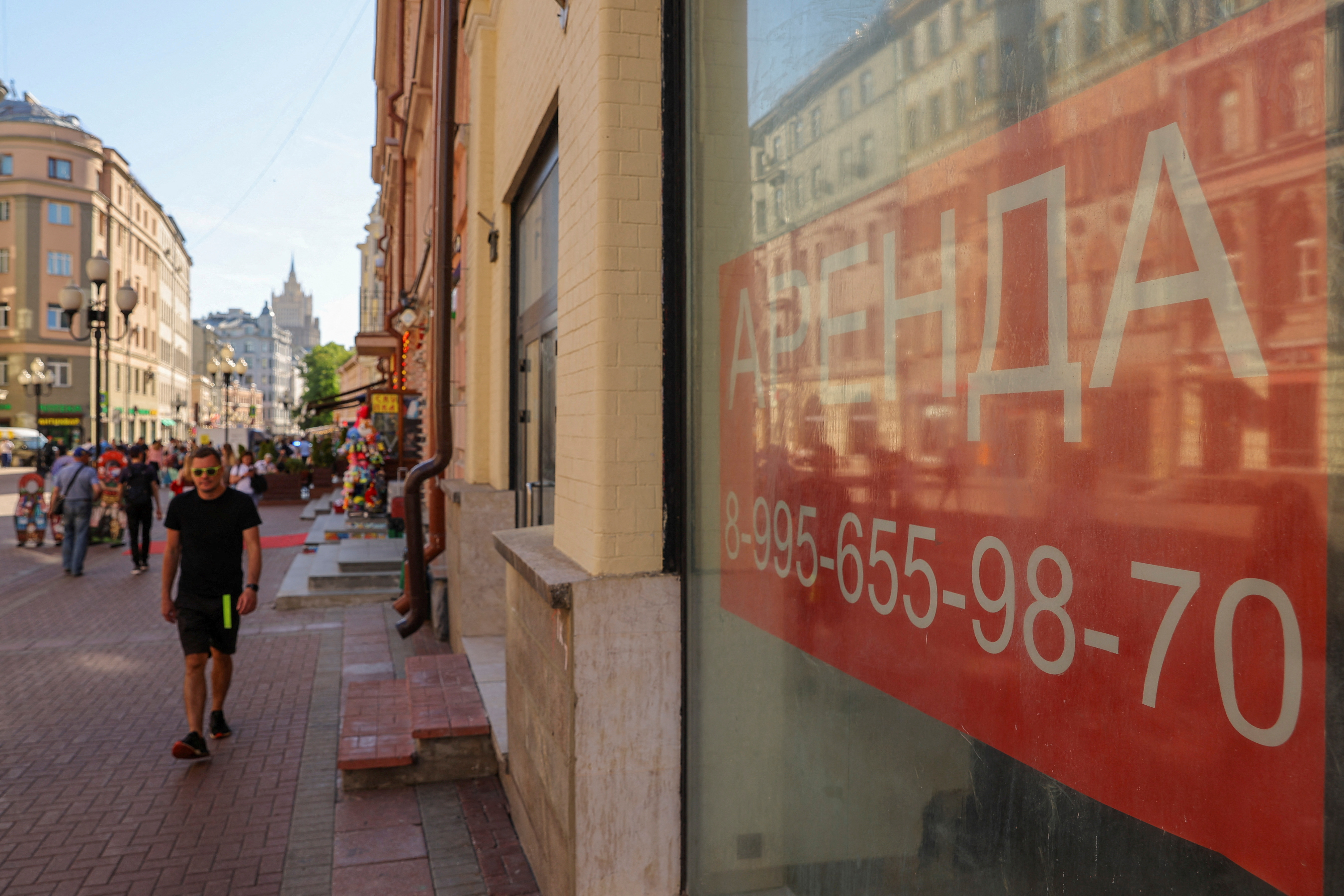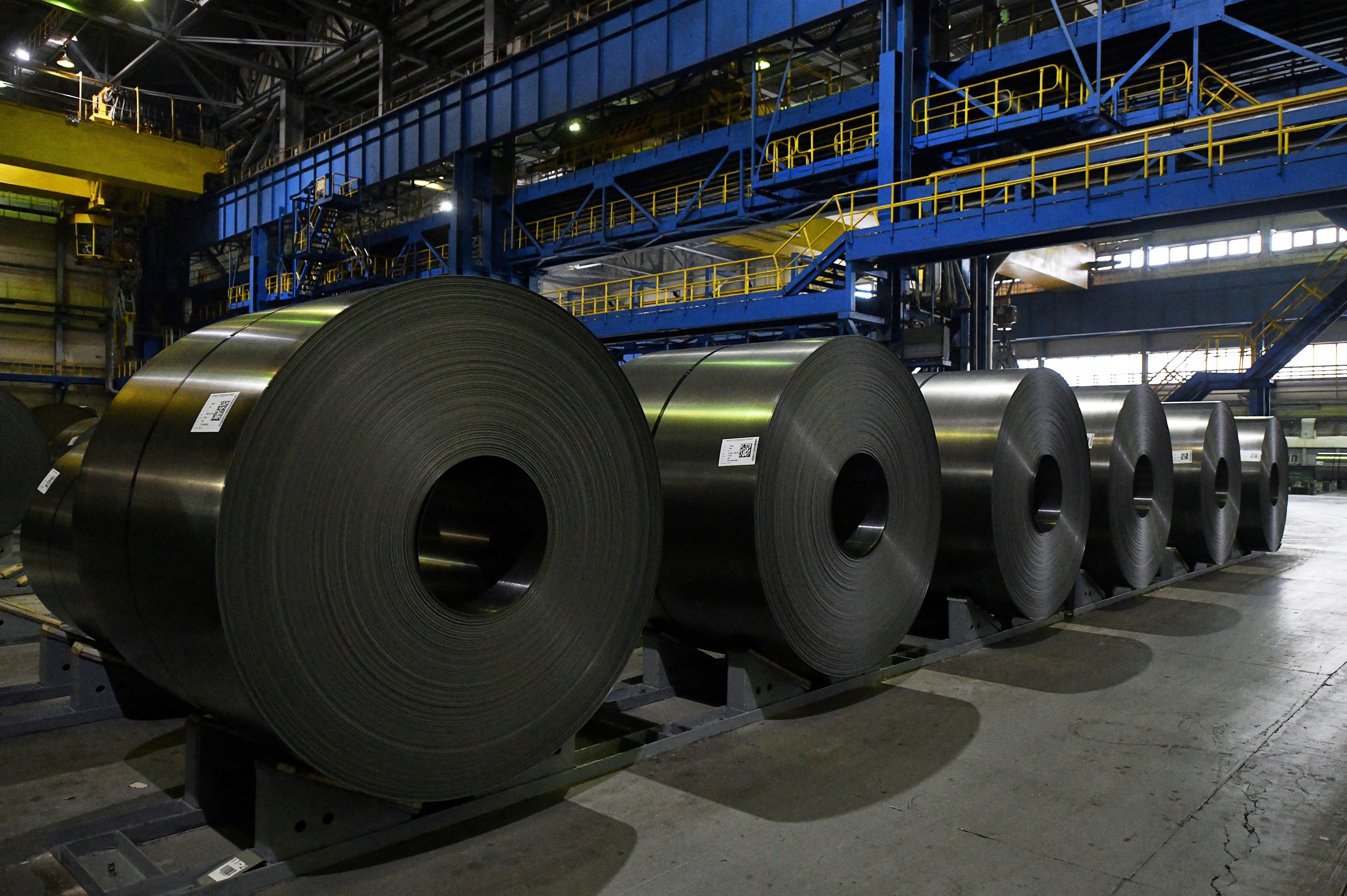Summary
- This content was produced in Russia where the law restricts coverage of Russian military operations in Ukraine
Russian economy showed unexpected resilience in the face of tough Western sanctions in 2022, but a return to pre-conflict levels of growth may be far off as more government spending is channeled towards the military.

Even internal forecasts issued soon after Moscow deployed its troops into Ukraine a year ago had predicted the economy would contract by more than 10% last year, outweighing the slumps seen after the Soviet Union collapsed and during the 1998 financial crisis. But statistics agency Rosstat’s first estimate shows a smaller contraction of 2.1% in 2022.
“The Russian economy and system of governance proved to be much stronger than the West supposed,” President Vladimir Putin told Russia’s political, military, and business elite this week. “Their calculation did not come to pass.”
High prices for its energy exports helped soften the blow from sanctions aimed at cutting off Russia economically, while capital controls saw the rouble shore up to a seven-year high. A fall in imports resulted in a record current account surplus.
The central bank, chaired by Elvira Nabiullina, kept a firm grip on the tiller despite losing access to nearly $300 billion worth of international reserves.
But, analysts see a sizeable and long-lasting opportunity cost from what Moscow calls its “special military operation” in Ukraine. Before the conflict started, the government had predicted a 3% economic expansion last year.
“The fact that the economy surprised everyone last year is certainly a positive factor,” said Grigory Zhirnov, an analyst for the My Investments Telegram channel. “However, it is better to compare the dynamic relative to what it would have been if the previous trend had continued.”
Zhirnov said the economy would not return to its 2021 size until 2025, “and the level of GDP that could have been achieved in the absence of last year’s crisis will hardly be reached in the next 10 years”.
Moscow is obtaining new markets in Asia for its oil and gas exports, the economy’s lifeblood, and has continued the supply of consumer goods through a grey imports scheme. It progressively eschews the Western markets that helped spark its post-Soviet growth, however, and is turning inwards.
A “de-dollarisation” drive suggests the rouble has doubled its share in Russia’s international settlements, Putin said. Banks, meanwhile, are searching for domestic means of restoring profits.
Putin told business elites to invest in Russia, saying ordinary Russians felt no sympathy for their lost yachts and mansions.
‘Guns Not Butter’
He also argued for sustainable domestic development and a self-sufficient economy, calling up a criticism leveled against Soviet leaders so focused on military spending they overlooked people’s welfare.
“There is a saying: ‘guns, not butter’,” Putin said. “Defence of the country is, of course, the most important priority, but when solving strategic tasks in this area, we must not repeat the mistakes of the past, we must not destroy our own economy.”
But Russia is increasing military spending, and redirecting funds from schools and hospitals will ultimately hinder the development of civilian economic infrastructure.
Increasing expenditure and falling revenues prompted a $25 billion budget deficit last month, while the current account surplus more than halved from the prior year.
High oil prices would normally be helping supplement the rainy-day National Wealth Fund, but with its hydrocarbon exports now subject to sanctions and price caps, Russia is currently selling Chinese yuan from the NWF to make up for the deficit.
While the finance ministry has promised the deficit will not spin out of control, dipping into the fund risks lowering Moscow’s future spending capacity and fueling inflation risks.
The central bank, whose analysis of Russia’s economic health is always more pessimistic than Putin’s, has cautioned that the widening budget deficit is inflationary and said it is more likely to lift interest rates from 7.5% this year than lower them.
Buy Crypto NowHitting this year’s oil and gas revenue target is appearing more problematic, Oleg Vyugin, a veteran economic official, wrote in a report in February, especially as prices for Russia’s Urals oil blend have dropped.
In order to fulfill budget plans, Russia would need to double its planned NWF spending, risking higher inflation that would compel the central bank to hike borrowing costs.

“Implementing such a budget is a path to the gradual erosion of financial stability and the further decline of the population’s real wages,” Vyugin wrote.
Real disposable incomes fell 1% in 2022, causing Russians to save more and spend less. Retail sales shrank 6.7%.
Russians’ higher propensity to save is a sign of economic uncertainty, said Alexandra Prokopenko, an independent analyst and former advisor to the central bank.
Prokopenko, who also underlined the opportunity cost to the economy, said Russia’s financial leadership had gotten used to navigating crises. Similar officials have been at the helm since the global financial crisis in 2008, leading the country through a deteriorating relationship with the West.
“We can say for sure that the picture isn’t black and white. Putin can be proud of his ‘Fortress Russia’ that his financial leadership built for him,” she said. “But it was built at a high cost.”








